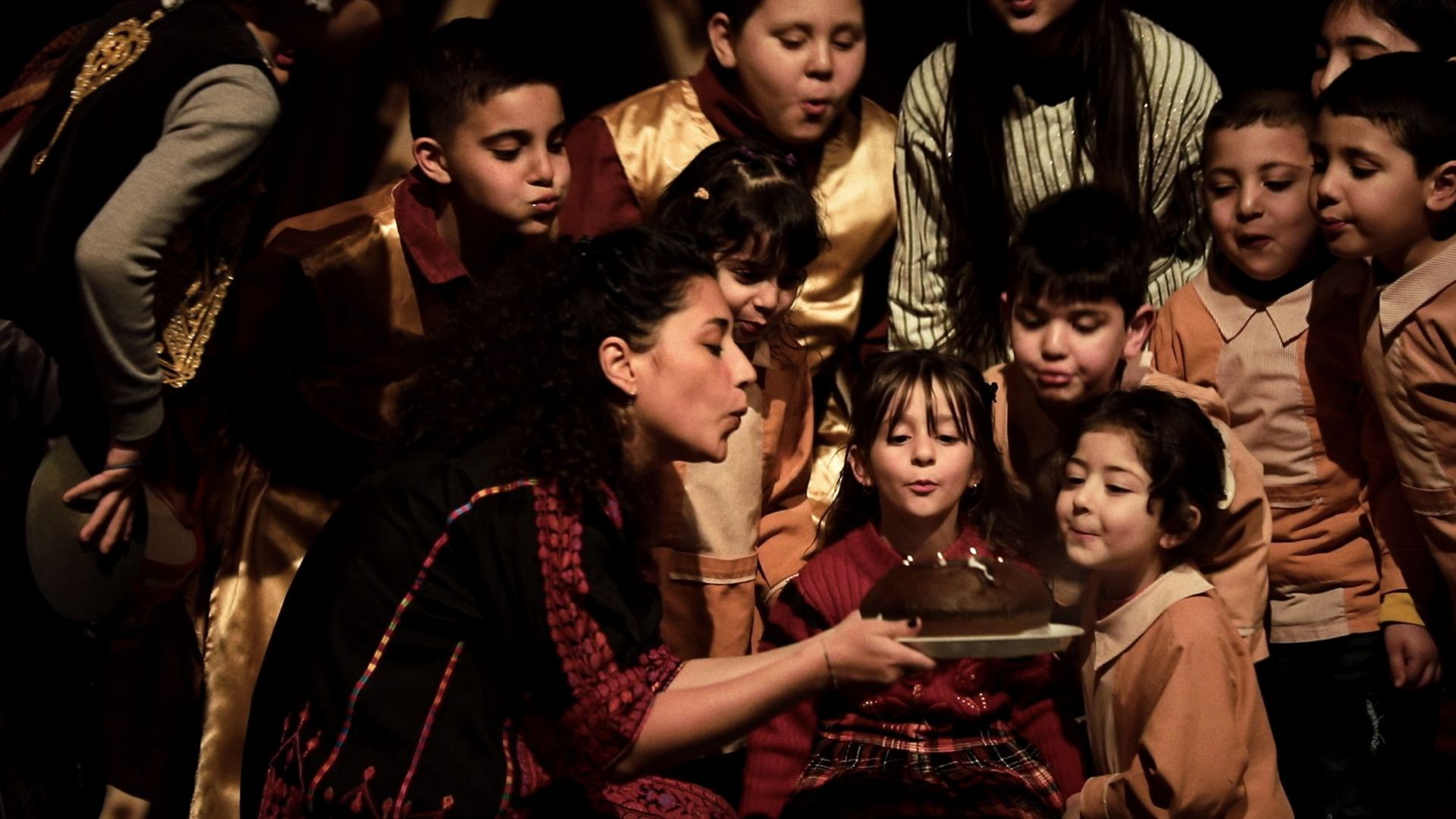“Bayt” is the Arabic word for “house”, but in the broader metaphorical sense it also means “home”, the place where we belong, where we have our roots. Mario Rizzi’s (*1962 Barletta, Italy) trilogy of this name tells of three women from Syria, Tunisia and Lebanon who manage, in the face of extremely tough conditions, to create such a home through to their extraordinary commitment, whereby the personal, of course, is always political.
A distinctive feature of Rizzi’s technique is that he fosters close links and collaboration with his central characters. It contrasts clearly with the approach of documentary journalism, because instead of trying to be neutral he gives a voice to those who are less privileged and are often perceived as “the other”. In this way he creates an empathetic connection between these figures and the audience.
Al Intithar (2013, 30 Min.)
The first part, “Al Intithar”, centres on Ekhlas Alhlwani, who was forced to flee Syria with her three children and now lives in Zaatari, a refugee camp in the Jordanian desert. Rizzi spent seven weeks observing her daily life, which is devoid of any prospects. He shows how Alhlwani makes every effort to establish some kind of normality for her family despite the difficult camp conditions. Although the political situation is rarely mentioned explicitly, the film vividly conveys the cruelty of war, and especially the state of uncertainty and rootlessness to which refugees are exposed.
Kauther (2014, 29 Min.)
The second part, “Kauther”, focuses on the civic commitment which triggered the so-called Arab Spring. The central figure here is Kauther Ayari, the first activist to address demonstrators in public at the start of the Tunisian revolution in 2011 with her call for freedom and democracy. Despite her pivotal role in those events – 6 days later the dictator Ben Ali stepped down – she has already been forgotten. In a long monologue, Ayari reflects on political developments in Tunisia, but also on her own story and the patriarchal domination that she has encountered in every aspect of her life. Rizzi’s work must be seen as paying tribute to this remarkable woman, while also asking who makes it into the history books and who is condemned to oblivion.
The Little Lantern (2019, 61 Min.)
The third part, “The Little Lantern”, tells the story of Anni Høver Kanafani, a Danish woman aged 84, who moved to Lebanon in the 1960s after falling in love with the Palestinian writer and politician Ghassan Kanafani. When her husband and his niece Lamis were murdered – allegedly by the Israeli foreign service Mossad – Kanafani stayed in Lebanon and devoted herself to her life’s great mission, setting up early education centres for Palestinian refugees.
This film is named after a fairy tale that Ghassan Kanafani wrote for his niece, which speaks metaphorically of tearing down walls and building a democracy. Rizzi adapted this fairy tale and performed it with children from Kanafani’s kindergartens. The film consists of three parts: apart from footage of rehearsals and of the final production, a central role is played by interviews with Anni Kanafani, where she speaks about her engaged life. Through the dramaturgical linking of these different narrative strands, Rizzi combines past and present, fiction and reality to demonstrate the utopian resilience not only of the arts, but especially of Anni Kanafani’s commitment.
IBB Video Space
Since 2011 the IBB Video Space has been screening artists who work with time-based media. The programme, which changes every month, features not only established names in contemporary video art but also up-and-coming artists rarely seen in museums to date. For these, the Berlinische Galerie seeks to facilitate an institutional début. Each month brings a new encounter with work that raises questions about the medium and about social or political issues. Importance is attached to including marginalised perspectives and to shedding light on the impact of power structures.

